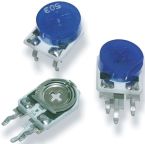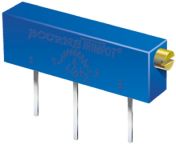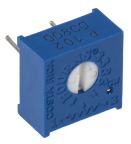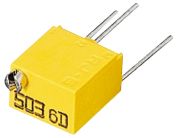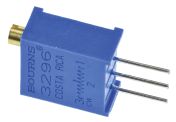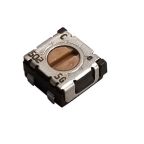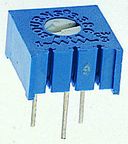Trimmer Potentiometers
Trimmer potentiometers, sometimes referred to as trim pots or trimmer resistors are a type of adjustable potentiometer (variable resistor). They are used to calibrate and fine-tune circuits. Trimmer potentiometers are typically constructed from cermet or have a carbon composition. They can be mounted directly onto PCBs (printed circuit boards).
Trimmer potentiometers are not adjusted very frequently. You can think of them as a 'set and forget' component. Trim pots let you set (or trim) the resistance to obtain a very precise current, output voltage or gain. Once the value has been set, it is unlikely that you'll need to adjust the trimmer again unless you need to recalibrate the circuit.
Can I replace a normal potentiometer with a trimmer potentiometer?
Yes, you can. However, trimmer potentiometers are typically more expensive than standard potentiometers with a fixed resistance rating. It is also worth bearing in mind the difference in lifespan too. Many potentiometers have a lifespan that allows for hundreds of thousands of cycles. Trimmer potentiometers typically have a lifespan of a few hundred cycles (at best). Trim pots also tend to take up more space on a PCB than a standard potentiometer.
Do I need a single turn or multiturn trim pot?
This completely depends on the intended application of the trim pot. Multiturn trimmer pots tend to have a higher resolution than single turn models. A single turn trimmer potentiometer is ideal for applications where a resolution of one turn is enough.
Adjustment types
Trimmer potentiometers are normally adjusted by hand (you can turn the adjustment knob with your fingers), with a screwdriver or with a specialised adjustment tool designed for use with a particular model or series.



